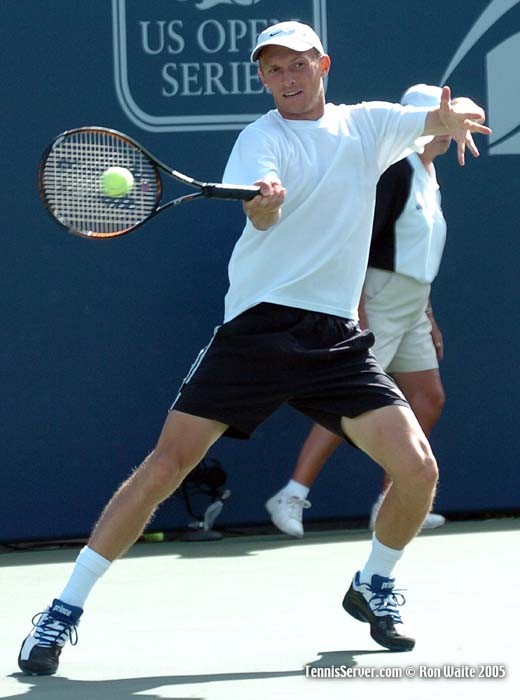First, stop for a second and look at the way you're conducting, and have conducted yourself, in this thread. It's time to grow up.
Look who is talking.
Second, the essence of your argument, however, is ridiculous. When you throw darts at a target, you train your eyes at the target. This is no different. The contact point is the target you're aiming for. Does it not stand to reason that looking at this point will help you aim for it better?
People aim the ball in different ways. One is by actually looking at the target, expecially in a game like archery or something where you are intently allowed to look at the target. In other words, the game played is largely static or stationary.
In a game like tennis players aim the ball in a several different ways.
1. By directly looking at the target (focal).
2. By seeing the target in their peripheral vision.
3. By seeing the target in their mind.
Also, if you admit that the techniques are different, then why would one not be better than the other? How can they simply be exactly equally effective?
Players can not track the incoming ball quick enough with their eyes. They are seeing the blur which may or may not be the actual ball itself. Concerning our sensory abilities, we can't even register the feeling of the ball hitting our strings until the ball is long gone. Our central processing is too slow as compared to a ball coming within 4 - 5 feet at a very fast speed. Most likely you are seeing an image of the ball but not the ball itself. And even that image is a blur as well. When a ball is within 4 - 5 feet and traveling at speeds that are seen in the pros, you cant even blink that fast. Or if you can, it would be very close as to just how quickly that ball hits the strings and so on within that distance and traveling at a fast speed.
The eyes can not move quick enough and provide the brain the details of the information it is receving when the ball gets very close to us. Unless the ball is moving very slow or the object (the ball) becomes a lot larger, the human eye can not keep up. Therefore, the image we see is a blur with a lot of players looking forward to the last point they saw the ball.
When you post photos and make your little claims, you are showing your ignorance. You are showing yoru ignorance because some people do take their eyes off the ball, some people are focused closer to contact when they last could pickup the ball, and some people simply look forward because they have trained their brain to process the information of the incoming ball and fill in the blanks in their brain. In other words, other sensory capabilities kick in.
The bottom-line is you brought up an old argument because your argument in this thread was weak and narcotic.
The bottom-line is nobody can see the ball hit the strings. It is humanly impossible. Even with Federer turning his head, there is no way he can turn his head back towards his racquet and be able to track the ball (not the blur) into his strings, see it hit the strings, and so on. There is no darn way.
Tracking the ball is the same for all players. They use two eyes and a brain to track the ball. If you want to dive into the sublties (like Federer turning his head) to save face, you go right ahead.
You have twisted meanings and you have provided photos to support your twisted claims.
The person that needs to grow up is you.





